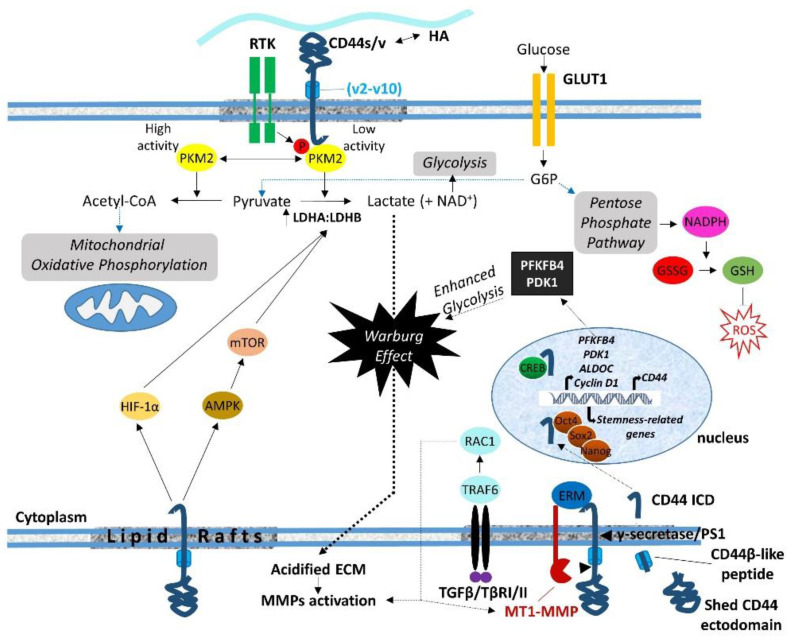Figure 2.
Schematic illustration of the roles of CD44 ICD in the regulation of transcriptome and cell metabolism. CD44 (via its ICD) dictates the metabolic shift from mitochondrial oxidative phosphorylation to aerobic glycolysis (the Warburg effect) through regulation of important metabolic enzymes such as PKM2, PFKFB4, and LDH. Enhanced pentose phosphate flux results in NADPH production that promotes GSH synthesis, which in turn suppresses ROS accumulation. Increased lactate production due to enhanced aerobic glycolysis results in the generation of an acidified pericellular microenvironment, which favors MMP activation. MMPs can be also activated by the TGFβ/TβR/TRAF6/RAC1 axis, thus triggering CD44 cleavage and the translocation of CD44 ICD to the nucleus, where it regulates the transcription of target genes, including CD44 itself (for details, see text).

